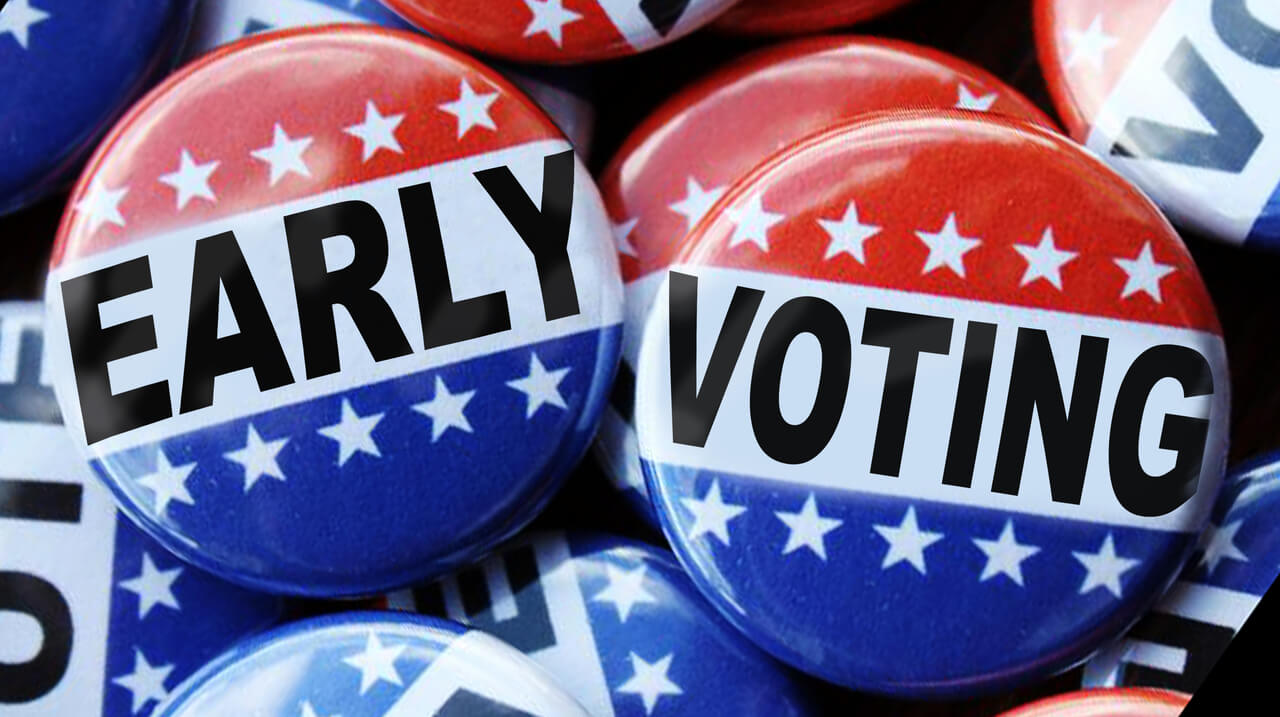Kelly Ganski
Illinois officials have expanded vote-by-mail options for November’s general election, allowing all registered voters to safely cast their ballots from home:
- Any registered voter can request an application to vote by mail; anyone who voted by mail in the state in the last two years will automatically receive an application.
- In some locations voters may cast their ballots early and in person starting Sept. 24. New election rules have also introduced curbside voting.
- Election Day is now a holiday for all schools, government offices (except election authorities) and state universities and community colleges.
Here’s what else you need to know:
How do I register to vote?
You can register online, by mail or in person. Use the state’s online voter portal to register or to check your registration status. Or you can download a registration application and mail or deliver it to your county clerk’s office or the Board of Election Commissioners’ office.
You can also pick up registration paperwork in person at your county clerk’s office; at some city, village and township government offices; and at certain libraries, public schools and military recruitment offices.
If you register in person, you’ll need two forms of identification, at least one of which confirms your address. If you register by mail, you’ll be asked to submit the number on your driver’s license or other state-issued ID. If you don’t have either, you can submit the last four digits of your Social Security number, a copy of a current photo ID, or a copy of a utility bill, bank statement, paycheck, government check or other government document that confirms your name and address. The Cook County Clerk’s office maintains a list of acceptable forms of identification and when voters may need to use them.
How can I get a mail-in ballot? Are there important deadlines?
You can obtain a no-excuse vote-by-mail application on the state’s election information web page. You can also pick up an application at your local election office. All mailed applications must be received by election officials by Oct. 29. If you choose to submit a request in person, election officials must receive your paperwork by Nov. 2. Voters who submit their application for a mail-in ballot by Oct. 1 should receive their ballot by Oct. 6.
Mail-in ballots must be postmarked by Election Day and received by local officials within two weeks of the election. You can also submit your ballot by placing it in a secure drop box maintained by election officials. Contact your election office to find out where to drop your ballot on Election Day.
How do I know that my absentee ballot is secure?
Mail-in absentee ballots have a bar code that’s unique to each voter. Included with your ballot are instructions to help you track it through the state election system. You must sign the outer envelope included with the ballot materials, and a panel of three election judges will compare that signature with the one your local election authority has on file. If there are questions about the signature or how the ballot is sealed, the voter will be notified.
And a recent law requires collection boxes to be locked and opened only by election authorities. It also requires the Illinois State Board of Elections to establish additional guidelines for the security of these sites, which will be released closer to Election Day.
When is Election Day? When are polls open?
Tuesday, Nov. 3. Polls are open from 6 a.m. to 7 p.m. In some areas, you’ll be able to place mail-in ballots in secure drop boxes maintained by election officials.
Can I vote before Election Day?
Yes, early voting will be available in some locations beginning Sept. 24. Voters will be able to cast their ballots at their election authority’s office and at some temporary polling places designated by local officials. A separate round of early voting will start on Oct. 19, expanding early-voting locations in some counties. Under new expanded early-voting hours, polling places will be open from 8:30 a.m. to 7 p.m. on weekdays and from 9 a.m. to 5 p.m. on weekends. Use the state’s polling-place locator to determine where you should cast your ballot.
What form of identification do I need to vote?
If you’re already registered and you aren’t submitting a change of address, you won’t need an ID. If you’re registering for the first time or you’ve had an address change, you may be asked to submit at least one form of ID that confirms your name and current residence. A driver’s license or state-issued ID card is an acceptable form of ID, but you can find a full list of acceptable IDs, as well as info on when you may need to use one, on the Cook County Clerk’s office website.
What is being done to make polling places safe from the coronavirus?
Voters will be required to practice social distancing, voting booths will be appropriately spaced, and equipment will be sanitized throughout the day. The Illinois State Board of Elections is encouraging residents to vote by mail or early to decrease the number of people at polling places on Election Day. If the state’s mask mandate is extended into November, you’ll need to wear a mask when you cast your ballot.
Will I be able to vote in the same place as I always have?
Not necessarily. The local election offices may change your polling place to a school, now that schools will be closed on Election Day. Some locations may be consolidated to account for an expected shortage of poll workers. Contact your election office to find out where to cast your ballot.
A new law will also permit curbside voting, so that people can fill out their ballots outside of a designated polling place, with the help of poll workers. In addition, anyone within a particular jurisdiction may cast a ballot at one of the new central voting centers, regardless of their precinct.
What are the key races in my state?
- U.S. president
- U.S. Senate: Incumbent Richard J. Durbin (D) vs. Mark C. Curran Jr. (R)
- U.S. House: All 18 seats
- State Senate: 20 of 59 seats
- State House: All 118 seats
- Ballot initiative to change the state’s flat income tax to a graduated income tax
Voting rules and procedures may change before Election Day. We’ll update this story if they do, so bookmark this page and check back.
AARP is urging older Americans to ask the candidates 5 key questions:
- Just over half of all older Social Security beneficiaries rely on the program for at least 50 percent of their income. If elected, how will you ensure that current and future Social Security benefits are not cut as part of deficit reduction?
- Half of the people with traditional Medicare spend at least a sixth of their income on health care. If elected, how will you protect Medicare from benefit cuts, as well as lower health care costs and ensure seniors continue receiving the affordable health care they have earned?
- Unemployment during the coronavirus crisis reached the highest levels since the Great Depression, and older Americans have been affected disproportionately. If elected, how will you help Americans over the age of 50 recover economically from the effects of the coronavirus?
- Americans pay the highest prescription drug prices in the world. If elected, how will you cut prescription drug prices for all Americans?
- COVID-19 has caused death and suffering for too many older Americans who require long-term care. If elected, how will you make sure seniors can access safe and affordable long-term care at home, as well as in facilities like nursing homes and assisted living?
Also of Interest
- Stay updated on the 2020 election at AARP.org/election2020.
- For the latest coronavirus news and advice go to AARP.org/coronavirus.







